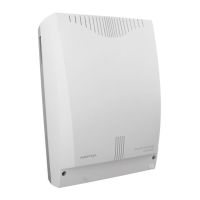Ascotel IntelliGate 2025/2045/2065
618 Planning DECT systems Part 3
5.3.2 High-frequency propagation conditions
For a better understanding of the explanations on physical conditions given in the
following sections, we first need to take a look at the basic principles of high-fre-
quency propagation.
The method under discussion here is DECT standard. It operates in the frequency
range of 1880...1900 MHz and provides 120 communication channels. All cord-
less telephony systems are subject in principle to the following explanations. The
experience gained in planning any system will therefore be very useful when it
comes to planning Ascotel DECT systems.
Interference factors
The knowledge of potential reasons for interference can raise the project engi-
neer’s awareness to such an extent that many critical points can be avoided
already at the design stage of the Ascotel DECT system by using the appropriate
measures. In radio technology there are many interference factors that affect
mainly the range and quality of the transmission.
In principle we need to differentiate between two types of interference factors:
• Interference by obstacles that attenuate and / or reflect radio propagation,
causing dead spots
• Interference due to other radio signals, leading to transmission errors
The receive power of DECT signals can fluctuate a great deal, locally, within only
a few centimetres (see Fig. 3.18). This means that signal interference can be
reduced or eliminated simply by altering the position.

